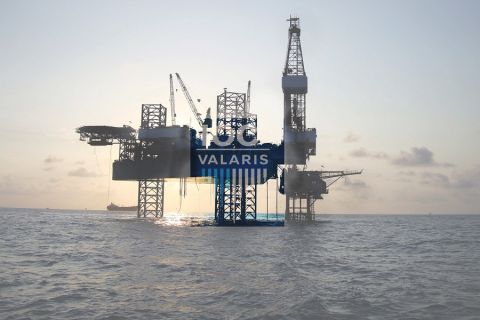To date, more than 4,000 subsea completions have taken place in deep water, and estimates suggest this total will increase by 500 to 600 per year. At the same time, recoveries from these subsea deepwater wells can be disappointingly low – 20% versus an average of 50 to 60% for platform and land wells.
While numerous production issues account for lower recovery rates in deepwater wells, three issues in particular stand out: formation damage in the near wellbore region, solids production, and water production.
A variety of new and established industry intervention technologies can address these problems. When applied correctly, these technologies can increase production, lead to higher recoveries, extend field life, and lower costs.
Removing near-wellbore damage
The most common formation damage in deepwater wells results from fines migration, asphaltene deposits, paraffin deposits, and scaling. Improving production or injection in damaged wells begins with correctly identifying the issue causing the decrease in performance then designing an appropriate treatment to improve performance and extend the life of the well.
Fines Migration. Fines migration caused by small formation particles that accumulate in the proppant pack, in perforations, and around screens can add large skin values, leading to drastic declines in production. The most effective way to remove this type of damage is by injecting a hydrofluoric (HF) acid treatment while addressing such things as feldspar incompatibilities, fluosilicate precipitation, carbonate removal, clay instabilities, ion exchange, fluid invasion, and oil well conditioning.
To condition an oil well for an HF acid treatment, it is best to include a carbon dioxide (CO2) preflush. Because CO2 is immiscible in oil, the CO2 displaces the viscous hydrocarbon away from the near wellbore area and allows the acid to react where damage removal is needed the most. This type of preflush improves acid penetration into oil zones, reduces water-zone stimulation, and decreases emulsion problems.

Before RPM treatment, formation water flow blocks the pore throat and restricts oil movement. After the RPM agent adsorbs to the pore surfaces, the brush effect restricts water, but has little to no effect on oil/gas flow. (Images courtesy of Halliburton)
Following the HF acid treatment, a formation-specific fines migration treatment should be pumped to prevent recurrence of the damage. New waterbased materials have been developed to address specific well conditions. These advanced materials, which include polymers, surface modification agents, and specially formulated consolidation resins, can provide the appropriate level of fines control to maintain well production.
Asphaltene and Paraffin Deposits. In some deepwater wells, asphaltene and paraffin can deposit in the wellbore and pore throats of the formation, greatly reducing well production. Aromatic solvents such as xylene can effectively dissolve and remove this damage, and many operators have seen tremendous improvements in production following treatment. However, production will soon decline again, requiring treatments to become a recurring event in the well’s life.
The newest generation of chemicals used for these treatments can return the formation to water-wet conditions with longer lasting results than a xylene injection. These chemicals do not contain any aromatic solvents, yet provide the same dissolving power as previous treatments.
Scale Deposits. Scale deposits also can be problematic for deepwater and other wells. Scale can be classified into three categories: water soluble, acid soluble, and acid insoluble. Inside the wellbore, scale can be removed mechanically or chemically. However, the only way to remove scale in areas that cannot be reached mechanically is with chemical treatments. Acid soluble scale such as calcium carbonate and iron carbonate can be dissolved with hydrochloric acid. Acid insoluble scale such as calcium sulfate and barium sulfate are not as easy to remove. While solvents exist that can effectively remove acid insoluble scale, reaction time is slow, and soaking is required.
Recently, producing wells on a deepwater project experienced production declines caused by BaSO4 scale accumulation. One of these wells had produced 9,061 standard b/d, declining to 1,404 b/d within 18 months. When tested, the well had a calculated skin of 76. After soaking with solvent to remove BaSO4, the calculated skin value dropped to 37. Following the acid job, calculated skin dropped further to 23.
Managing water
Many believe water production is inevitable, but there are situations where water production can be controlled chemically or with isolation equipment.
Generally, when using chemicals to control water production in the reservoir, the primary options are to use a sealant or a relative permeability modifier. The most trustworthy sealants create a seal at a distance from the well bore. These sealants are water based with low viscosity while injecting and contain an organic crosslinker to enable the sealant to solidify. Other types of crosslinkers may plateoff on the formation face.
Once the water-based sealant with its organic crosslinker enters the rock matrix, the well needs to be shut in to allow the material to cure. When the chemical becomes rigid, porosity and permeability are eliminated in that part of the rock matrix. Because fluid will never flow in that region again, special care must be taken when placing the material.
Relative perm modifiers (RPM) reduce the permeability of the formation to water with little to no effect on the permeability of the formation to hydrocarbons. These chemicals are thin, water-soluble polymers that attach to the rock surface when injected. The thin coating of the RPM on the rock surface increases water absorption. This creates a drag force, causing water flow to slow, but not stop, as would be the case if a sealant were used. RPMs have numerous applications in deepwater oil fields. They can be used for controlling water-based fluid loss, as a diverter in an acid treatment, or to lower the water cut in a producing deepwater well.
Water management should not only be considered in producing wells but also in injection wells where the injection profile and sweep efficiency are critical in the recovery process. In layered formations, injected water from an injector well can reach the producer well too soon because layers with higher permeability also have higher injectivity. To get an even distribution of fluid moving through the reservoir, conformance chemicals can be used to slow fluid flow in high perm streaks. Reservoir simulators can be very effective in designing these treatments.
Sand control
Chemical injection treatments to consolidate particles in and near the well bore have become a popular sand-control technique. These chemical treatments can be used to bond formation particles in the near wellbore region or bond proppant particles around screens, a low-viscosity water-based resin system has been developed, to enhance the use of consolidation chemicals in sand control. This new system is nitrogen-foam compatible to extend downhole volume and provide improved placement.
Chemical injection treatments to consolidate the formation have not been used much in deepwater wells. But when a gravel-packed well starts producing proppant and formation particles, many operators find that a consolidation treatment can be a cost-effective solution. Many deepwater wells run screens and pump fracpacks. Some of these wells produce proppant and formation particles later in their life, possibly due to damaged screens. A resin treatment can consolidate the proppant around the screens, greatly reducing further movement and production of the proppant.
Case history
A well in the Gulf of Mexico had produced for 18 months when it began sanding up – production before sand up was roughly 130 b/d of oil, 4 Mcf/d of gas, and 30 b/d of water, with a flowing tubing pressure of 1,700 psi. Roughly 60 days later, the sand was washed out with coiled tubing, and the well was given a particle-consolidation treatment. Thirty days after the well was brought back online, it produced 80 b/d of oil, 1.5 Mcf/d of gas, and 20 b/d of water. Solids production was zero with a flowing tubing pressure of 2,300 psi.
Advanced technologies have been successful in restoring production. These solutions reduce the need for repeat intervention treatments, significantly enhance well economics, and can increase production, resulting in higher recoveries, extended field life and lower overall costs.
Recommended Reading
TechnipFMC Eyes $30B in Subsea Orders by 2025
2024-02-23 - TechnipFMC is capitalizing on an industry shift in spending to offshore projects from land projects.
Flame Acquisition Holders Approve Merger with Sable Offshore
2024-02-14 - The business combination among Flame Acquisition Corp., Sable Offshore Holdings and Sable Offshore Corp. will be renamed Sable Offshore Corp.
Valaris’ 1Q Sets Positive Tone for Offshore
2024-05-06 - Coming out of first-quarter 2024, drilling contractor Valaris expects a sustained upcycle for the offshore drilling industry supported by demand growth, OPEC+ production cuts and supportive commodity prices.
SLB’s ChampionX Acquisition Key to Production Recovery Market
2024-04-21 - During a quarterly earnings call, SLB CEO Olivier Le Peuch highlighted the production recovery market as a key part of the company’s growth strategy.
Talos Energy Expands Leadership Team After $1.29B QuarterNorth Deal
2024-04-25 - Talos Energy President and CEO Tim Duncan said the company has expanded its leadership team as the company integrates its QuarterNorth Energy acquisition.





